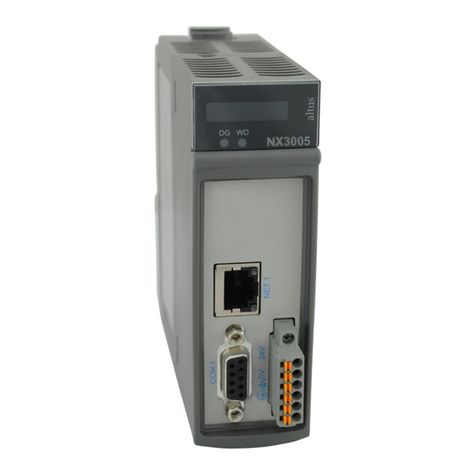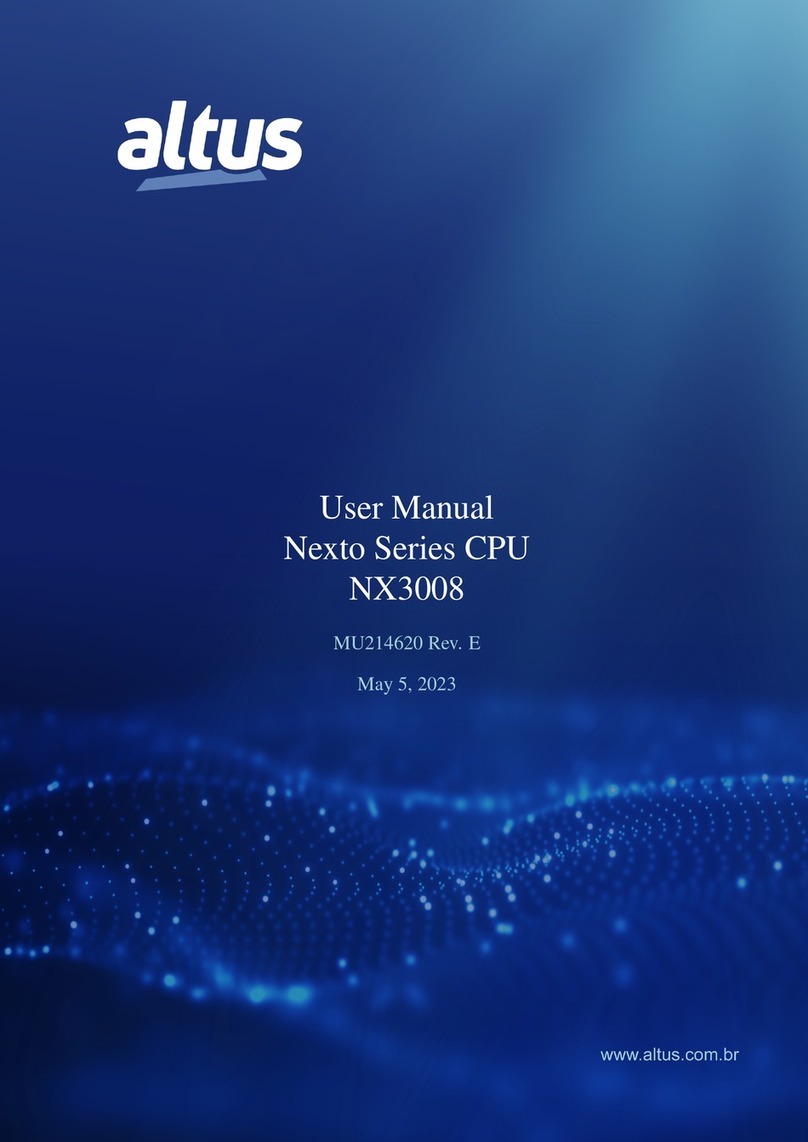
CONTENTS
4.14.7. GVL Module_Diagnostics .................................... 51
4.14.8. GVL ReqDiagnostics ...................................... 51
4.14.9. Prepare_Start Function ..................................... 53
4.14.10. Prepare_Stop Function ..................................... 53
4.14.11. Start_Done Function ....................................... 53
4.14.12. Stop_Done Function ....................................... 53
5. Configuration .................................................... 54
5.1. CPU Configuration ........................................... 54
5.1.1. General Parameters ....................................... 54
5.1.1.1. Hot Swap ....................................... 56
5.1.1.1.1. Hot Swap Disabled, for Declared Modules Only ............... 56
5.1.1.1.2. Hot Swap Disabled .............................. 57
5.1.1.1.3. Hot Swap Disabled, without Startup Consistency .............. 57
5.1.1.1.4. Hot Swap Enabled, with Startup Consistency for Declared Modules Only . 57
5.1.1.1.5. Hot Swap Enabled with Startup Consistency ................. 57
5.1.1.1.6. Hot Swap Enabled without Startup Consistency ............... 57
5.1.1.1.7. How to do the Hot Swap ........................... 58
5.1.1.2. Retain and Persistent Memory Areas ......................... 60
5.1.1.3. TCP Configurations .................................. 61
5.1.1.4. Project Parameters .................................. 63
5.1.2. External Event Configuration .................................. 63
5.1.3. Time Synchronization ...................................... 64
5.1.3.1. SNTP ......................................... 66
5.1.3.2. Daylight Saving Time (DST) ............................. 66
5.2. Serial Interfaces Configuration ..................................... 66
5.2.1. COM 1 .............................................. 66
5.2.1.1. Advanced Configurations ............................... 67
5.3. Ethernet Interfaces Configuration .................................... 68
5.3.1. Local Ethernet Interfaces .................................... 68
5.3.1.1. NET 1 ......................................... 68
5.3.2. Reserved TCP Ports ....................................... 68
5.4. Protocols Configuration ......................................... 69
5.4.1. Protocol Behavior x CPU State ................................. 71
5.4.2. MODBUS RTU Master ..................................... 72
5.4.2.1. MODBUS Master Protocol Configuration by Symbolic Mapping .......... 72
5.4.2.1.1. MODBUS Master Protocol General Parameters – Symbolic Mapping Con-
figuration ................................... 72
5.4.2.1.2. Devices Configuration – Symbolic Mapping configuration ......... 75
5.4.2.1.3. Mappings Configuration – Symbolic Mapping Settings ........... 76
5.4.2.1.4. Requests Configuration – Symbolic Mapping Settings ............ 77
5.4.2.2. MODBUS Master Protocol Configuration for Direct Representation (%Q) ..... 82
5.4.2.2.1. General Parameters of MODBUS Master Protocol - setting by Direct Rep-
resentation (%Q) ............................... 82
5.4.2.2.2. Devices Configuration – Configuration for Direct Representation (%Q) . . . 83
5.4.2.2.3. Mappings Configuration – Configuration for Direct Representation (%Q) . . 84
5.4.3. MODBUS RTU Slave ...................................... 86
5.4.3.1. MODBUS Slave Protocol Configuration via Symbolic Mapping .......... 86
5.4.3.1.1. MODBUS Slave Protocol General Parameters – Configuration via Sym-
bolic Mapping ................................. 87
IV






























